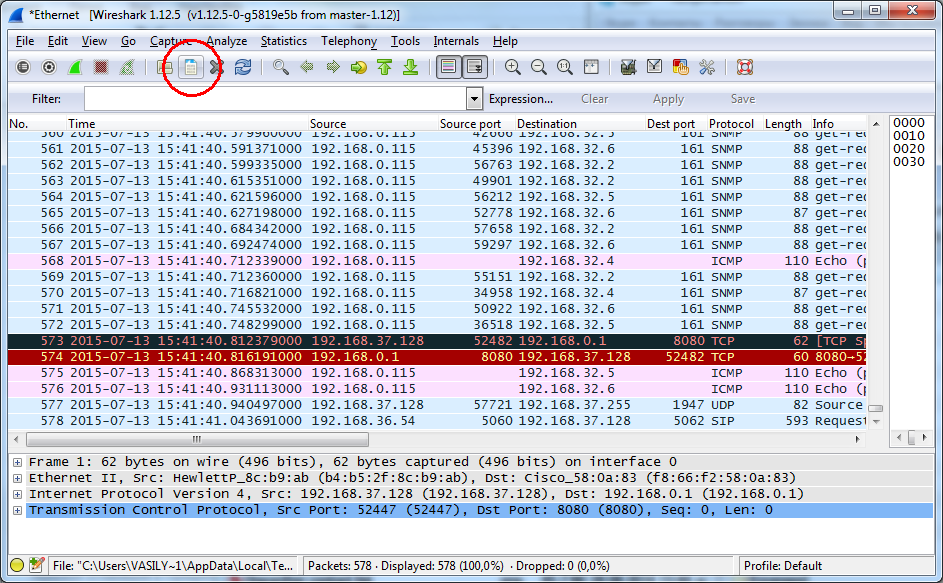

Folks who use Wireshark on a network are kind of like those who use flashlights to see what cool things they can find. Packet sniffing can be compared to spelunking – going inside a cave and hiking around. It also allows you to visualize entire conversations and network streams.įigure 1: Viewing a packet capture in Wireshark Visualization: Wireshark, like any good packet sniffer, allows you to dive right into the very middle of a network packet.

By applying a filter, you can obtain just the information you need to see.
Filtering: Wireshark is capable of slicing and dicing all of this random live data using filters. Packet Capture: Wireshark listens to a network connection in real time and then grabs entire streams of traffic – quite possibly tens of thousands of packets at a time. Like any other packet sniffer, Wireshark does three things: Wireshark is the most often-used packet sniffer in the world. Packet is the name given to a discrete unit of data in a typical Ethernet network. Wireshark is a network protocol analyzer, or an application that captures packets from a network connection, such as from your computer to your home office or the internet. Some of these networking tools, like Wireshark, Nmap, Snort, and ntop are known and used throughout the networking community.What is phishing? Understand the definition as well as how to prevent and protect against it, from CompTIA. Thanks to its set of features, WinPcap has been the packet capture and filtering engine for many open source and commercial network tools, including protocol analyzers, network monitors, network intrusion detection systems, sniffers, traffic generators and network testers. This library also contains the Windows version of the well-known libpcap Unix API. WinPcap consists of a driver that extends the operating system to provide low-level network access and a library that is used to easily access low-level network layers. Remote capturing on a Windows OS requires WinPcap tool installation. Remote packet capture on a Windows operating system We will discover how to capture packets remotely in this article. There are many packet capture methods, such as local, remote, network (Tap, SPAN) and so on. Remote packet capture on a Windows operating system.






 0 kommentar(er)
0 kommentar(er)
